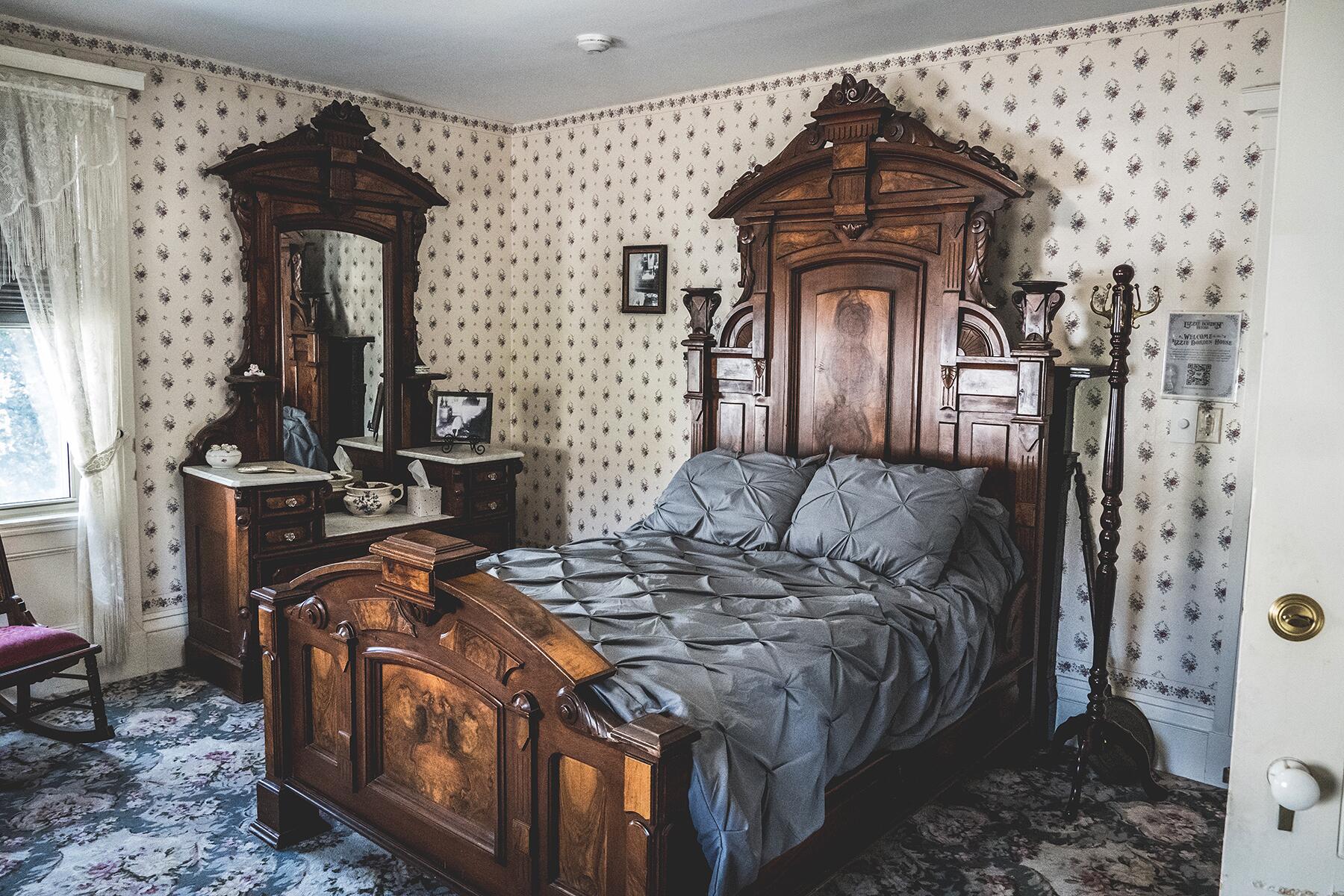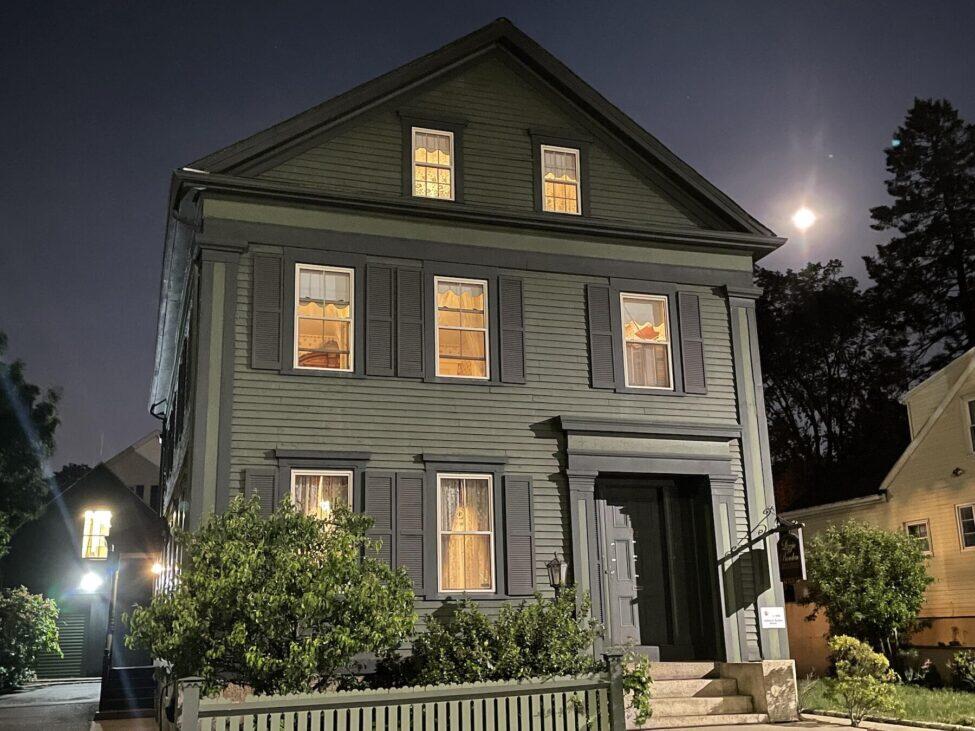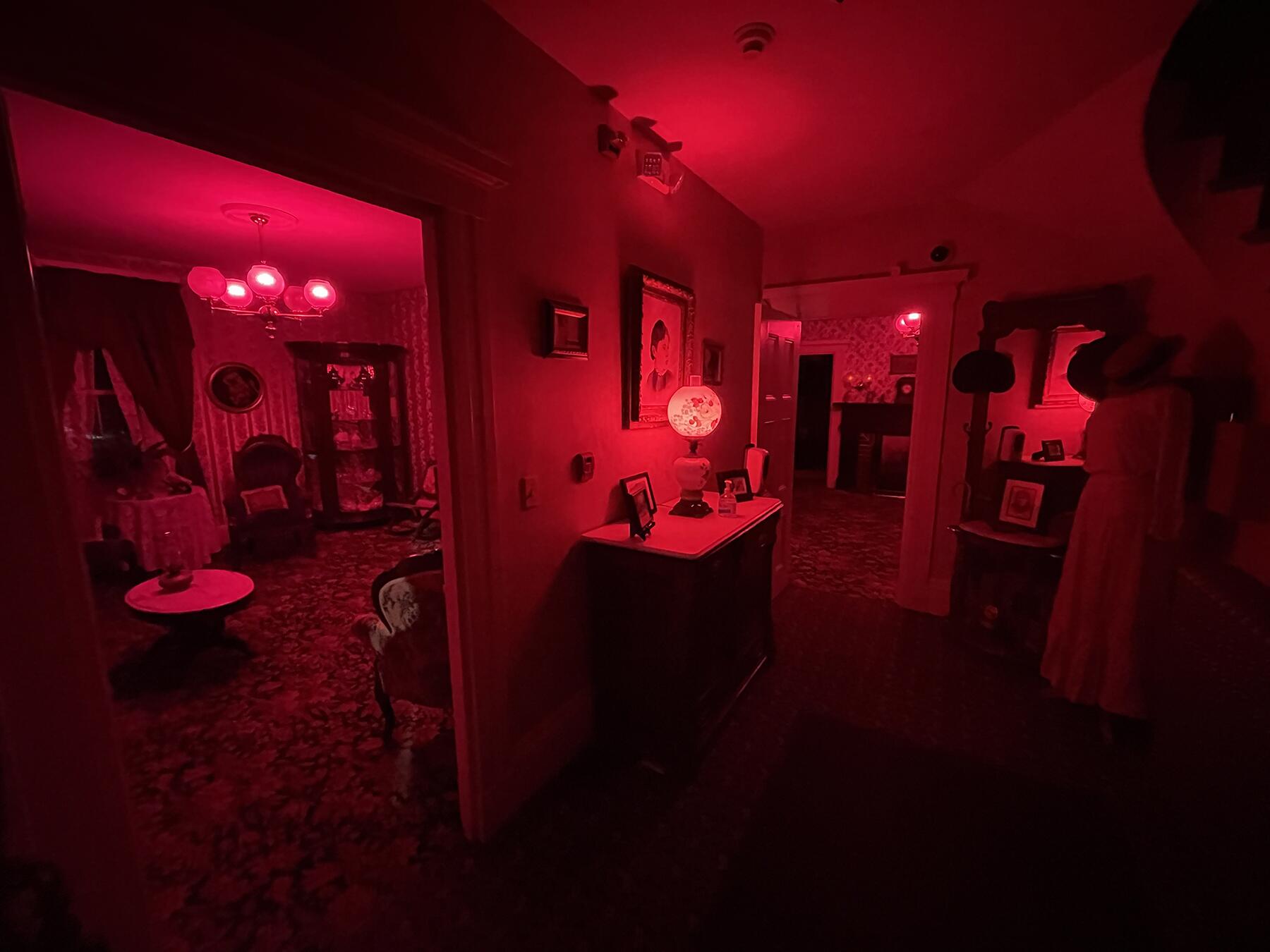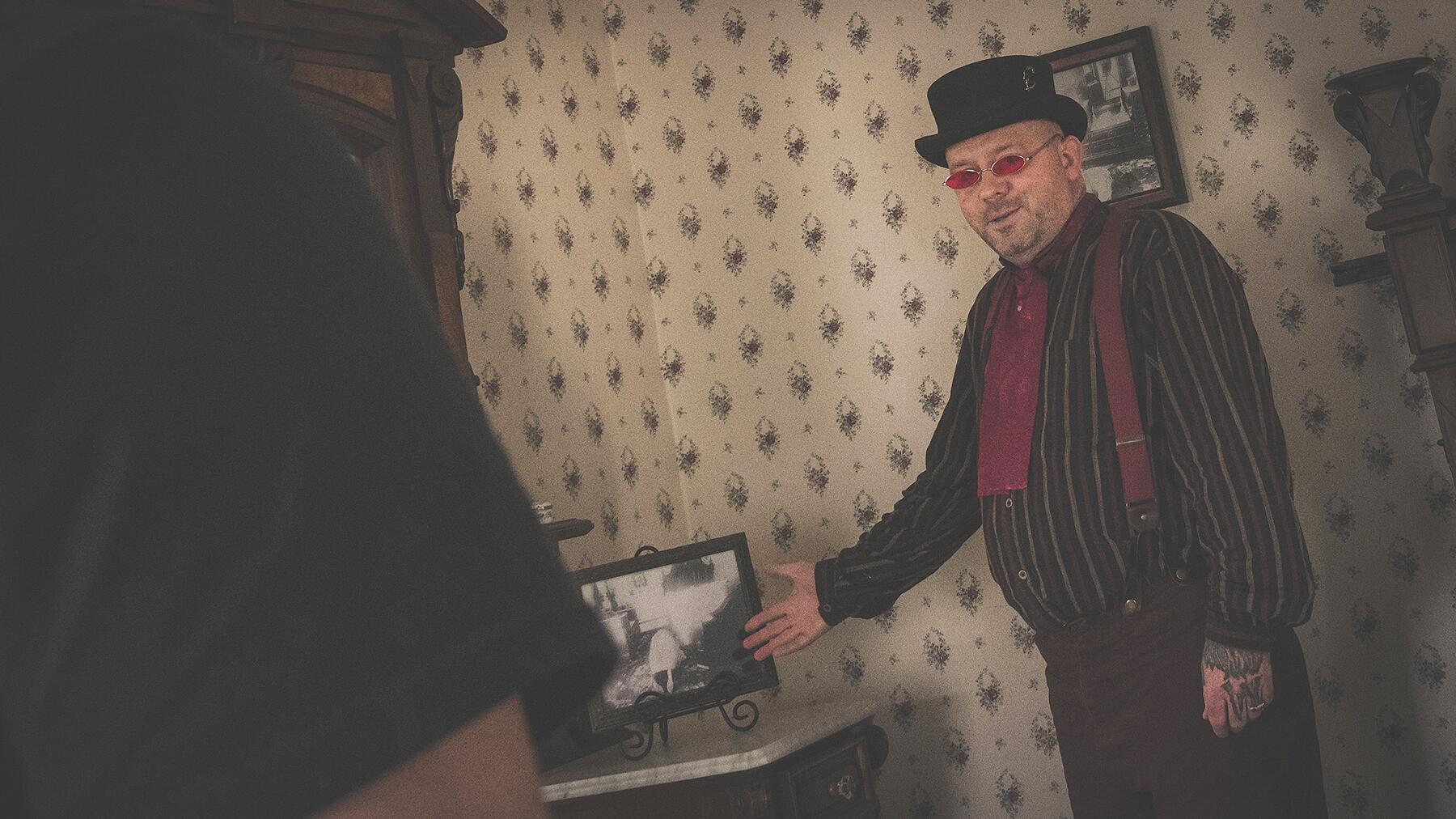"Lizzie Borden took an axe and gave her mother forty whacks. When she saw what she had done, she gave her father forty-one."
[Content warning: violence, gore].
If all you know about Lizzie Borden is the well-known nursery rhyme, be prepared for a Borden bombardment should you visit The Historic Lizzie Borden House, the 1892 site of two gruesome murders, which is now—wait for it—a bed and breakfast in Fall River, Massachusetts.
The poem presupposes that Lizzie, an unmarried 32-year-old Sunday school teacher, was the culprit. But study the many twists and turns of this exceedingly complicated case, and you may well end up feeling otherwise, even though by her own admission, Lizzie was on the premises during both murders. She claimed to have been ironing handkerchiefs when her stepmother was slaughtered and in the barn out back looking for fishing gear when her father returned from his morning errands and lay down for a nap, not knowing his wife lay dead upstairs.
The upstairs bedrooms of the now-bed-and-breakfast are rented out to overnight guests, including Lizzie’s room and the infamous guest room where Mrs. Borden was making up the bed when someone entered carrying a hatchet (not an axe), and—well, you know what happened then. There weren’t 40 or 41 whacks, only 19 for the mother—or stepmother as Lizzie would have been quick to remind you—and a mere 10 for the father. But in both cases, portions of the victims’ skulls were caved in, and the killer kept striking well past the point where the deed was done. You may have seen the famous black-and-white photos—the father on the couch, his face a bloody pulp, and the stepmother lying on the floor face down between a bed with a towering headboard and a nearby dresser.
Recommended Fodor’s Video
On the surface, it seems that there’s no one but Lizzie who could have done it. Their maid, Bridget, was outside washing windows; Lizzie’s sister, Emma, was out of town visiting friends; and their mysterious visitor of the previous evening, Lizzie’s maternal uncle John Morse (who’d arrived unannounced with not so much as a toothbrush on him) was also out running errands with alibis that were suspiciously specific—he even remembered the number on the streetcar conductor’s cap, and the first and last names of six priests also riding with him.
So, many consider it a case closed: Only Lizzie had the opportunity to carry out the murders. And yet those who answered her cries for help after she said she discovered her father’s body noticed two things: (1) Mr. Borden’s wounds were still bleeding, suggesting that he’d been very freshly murdered; and (2) Lizzie didn’t have a drop of blood on her face, hands, hair, or clothing. Whoever carried out these murders would surely have been covered in blood, and it would have taken time to thoroughly wash up and change clothes. So how could Lizzie have possibly been the killer?

The Room Where It Happened
The bed-and-breakfast embraces its macabre past, taking tours and even ghost hunts through the rooms that have been meticulously restored to their appearance when the unhappy Borden family lived there. There’s even a replica of the sitting room couch where Mr. Borden was napping when someone sneaked in from behind and gave him a splitting headache—in a manner of speaking.
The infamous scene of the crime, the guest bedroom, is by far the most popular rental in the house, and should you have a similar ghoulish urge to stay there, be forewarned that you’ll likely have a wait of several weeks.
But that was the room I stayed in.
When you arrive, your first impression will be how spacious and comfortable the room is, filled with period bric-a-brac like a 19th-century wash basin, a bed warmer, and a quaint low-to-the-ground rocking chair. The Victorian dresser and bed and the floral print carpeting aren’t exact matches of what you’ll see in the photo, but they’re very close. Appropriately, the bedspread is a blood-red chenille. The room is so cozy it’s almost easy to forget what happened there. Almost.
Nevertheless, I resolved to sleep on the opposite side of the bed from where Mrs. Borden’s body was found.

Take a Tour of the Lizzie Borden House
All the grim stories of that infamous morning are thoroughly told in a highly informative, even entertaining tour of the house offered several times daily. Visitors pass through every room, seeing such macabre touches as simulated skulls with gaping holes in the dining room sideboard and a plastic hatchet in the sitting room near where Mr. Borden was slain (guests are encouraged to wield the hatchet on their own). There’s even a tiny ironing board with handkerchiefs atop it, waiting for Lizzie to finish her work, as well as display cases with dresses worn by Elizabeth Montgomery in the 1975 television drama The Legend of Lizzie Borden.
Our spirited tour guide, Louise Holt, was a delight, singing for us the tune of a piece of sheet music atop a piano in the front parlor entitled “You Can’t Chop Your Poppa Up in Massachusetts.” Using period photographs of all the main players and places associated with the murders, Louise ran through important background leading up to that fateful day, including the substantial tensions inside the Borden family. Although it may well be a legend that Lizzie’s wealthy, tightfisted father, Andrew, had forced the family to eat spoiled mutton for several meals, there are multiple other examples of his penny-pinching.
Matters were especially tense between the two sisters and their stepmother, Abby, whom Lizzie refused to call anything but Mrs. Borden. A door connecting Lizzie’s room with her parents was not only locked but furniture was pushed against it. Louise also told us about a potential motive for the murders—Andrew’s transfer of a piece of property to someone in Abby’s family, which infuriated Lizzie and sister Emma. Were they fearful of losing their inheritance?
Louise also briefly touched on the matter of Lizzie’s trial, where she was acquitted by a jury of 12 men who determined there was nothing but inconclusive evidence against her since no bloody clothing was uncovered, despite extensive searches of this house. In fact, the murder weapon itself has also, to this day, never been found. With no hard evidence to pin on Lizzie, the jury members couldn’t conclude beyond a reasonable doubt that she’d done it. They also seem to have become a bit smitten with her–they sent her a group photo of themselves as a gift after the verdict was read.
In spite of her gregarious storytelling, Louise didn’t pull any punches. She even went so far as to demonstrate how Mrs. Borden likely was murdered, with her killer standing astride her prone body as he (or she) hacked at her from above. Louise invited us to consider how much noise the hefty 200-pound body of Abby Borden would have made as she fell to the guest room floor, a sound that no one inside the house could have failed to hear. “We tried it ourselves,” Louise explained. “The whole house shook. Right down to the light fixtures.”
I might recommend an add-on to the house tour that will take you into the cellar, where photos taken on your cellphone of the alcove where the Bordens did their laundry will pick up a ghostly face on the back wall. In an adjacent room, note the red stains on the ceiling where the blood of Andrew Borden seeped through the floor from the sitting room above. And by all means, make a stop at the gift shop where you can pick up Lizzie Borden bobblehead dolls, plastic hatchets (both with and without “blood” on them), and t-shirts with inscriptions like “Don’t Make Me Axe You Twice.”
Hunting for Ghosts
Another add-on tour at the Borden House is a late-night Ghost Hunt where participants are given all manner of ghost-hunting equipment and allowed to roam freely through the house (except for the rented guest rooms). Nothing whatsoever happened on my own tour. But people on other tours have reported hearing words and short phrases on their “Spirit Boxes,” a kind of walkie-talkie that purportedly allows communication with those in the hereafter. Others occasionally see colored lights going wild on their electromagnetic field detectors when spirits are present—if the lights start flashing red, the spirits may well be right beside you. Still, others have reported the house’s electricity going on and off, doors opening and closing, and even the sensation of being touched by an unseen hand.
Overnight guests have reported similar activity in the attic room once occupied by Bridget, the maid. Guide Louise Holt said she’s more than once arrived for work in the morning to find the prior night’s occupants of that room sleeping in their cars, unable to cope with what was going on inside. She told us how the house’s former owner once spent a night in Bridget’s room to find a rocking chair that had been across the room when she fell asleep sitting beside her bed when she awoke. Plus, it was rocking. Of course, there’s no guarantee such eerie occurrences will occur on any given night—spirits don’t scare on command. But there’s always that potential they’ll pay a visit.
Alas, for me, they did not, not even in my night-long sojourn in the murder chamber. To my utter astonishment, I fell asleep that night almost as soon as my head hit the pillow. What’s more, I awoke at dawn after a full eight hours of sleep, also amazing because I’m a restless sleeper who always wakes up several times during the night. In addition, I had one happy dream after another, many featuring reunions with old friends, including one who departed for the Great Hereafter two decades ago. If the spirit of Mrs. Borden or anyone else in the family had appeared, they could have danced around my bed all night long or even crawled under the sheets with me for all I knew. I wasn’t just disappointed—I was mortified. What kind of heartless scoundrel sleeps so blissfully in such a setting?
The house where the murders occurred isn’t the only other Lizzie Borden-related site in Fall River. Take a drive past Maplecroft, the magnificent Queen Anne mansion where Lizzie lived her final years. It’s now a private home, but the exterior remains little changed, and you can see the large side yard where Lizzie befriended the neighborhood birds and squirrels. Afterward, go to Oak Grove Cemetery, where Lizzie lies buried right beside the parents she supposedly murdered. The headstone reads “Lizbeth,” the name she adopted after the trial. And by all means, make a stop at the Fall River Historical Society, where an entire room of Lizzie Borden memorabilia is on view, including the notes taken during her initial interrogation as well as a bloody pillow sham and a hair piece that flew off Mrs. Borden’s head as she was being struck. There’s even a copy of Lizzie Borden’s (very bland) meatloaf recipe.
So, Did She Do It?
But even after a thorough pilgrimage through the town and reading any of the voluminous literature written on this infamous case, you’re still not going to be able to answer the very basic questions: Did she do it? And if not, who did? Many theories, some of them outlandish, have been proposed over the years, like the possibility that Lizzie committed the murders in the nude or that she and Bridget were having a love affair that Andrew had discovered. Alternate killers that have been proposed include an agitated man seen walking through the neighborhood that morning, Andrew’s illegitimate son, or possibly even dear old Uncle John, who had some discrepancies in his timeline and who may have had time to circle back to the house and do the deed.
But as you’ll see if you visit the house, given the limited points of entry, not to mention its relatively small size, it strains credulity to think a third person could have entered unknown to Lizzie, Bridget, or even the neighbors. Perhaps, as many think, Lizzie was “in on it,” making arrangements for someone else to perform the murders. If that’s the case, why on Earth didn’t she clear the premises and give herself an alibi?
Given the lack of evidence, it seems we are never going to know the answers to any of these questions, leaving us in perpetual wonderment about what exactly happened that long-ago intensely hot August morning. As Phil Devitt, another tour guide at the house, told me: “People usually leave the house with more questions than when they walked in. That’s a sign we’ve done our job. Even with all the facts of what we know happened, we can’t piece together an answer that’s going to satisfy everyone. That’s the frustration that lays behind the Lizzie Borden story. But it’s also the allure.”






